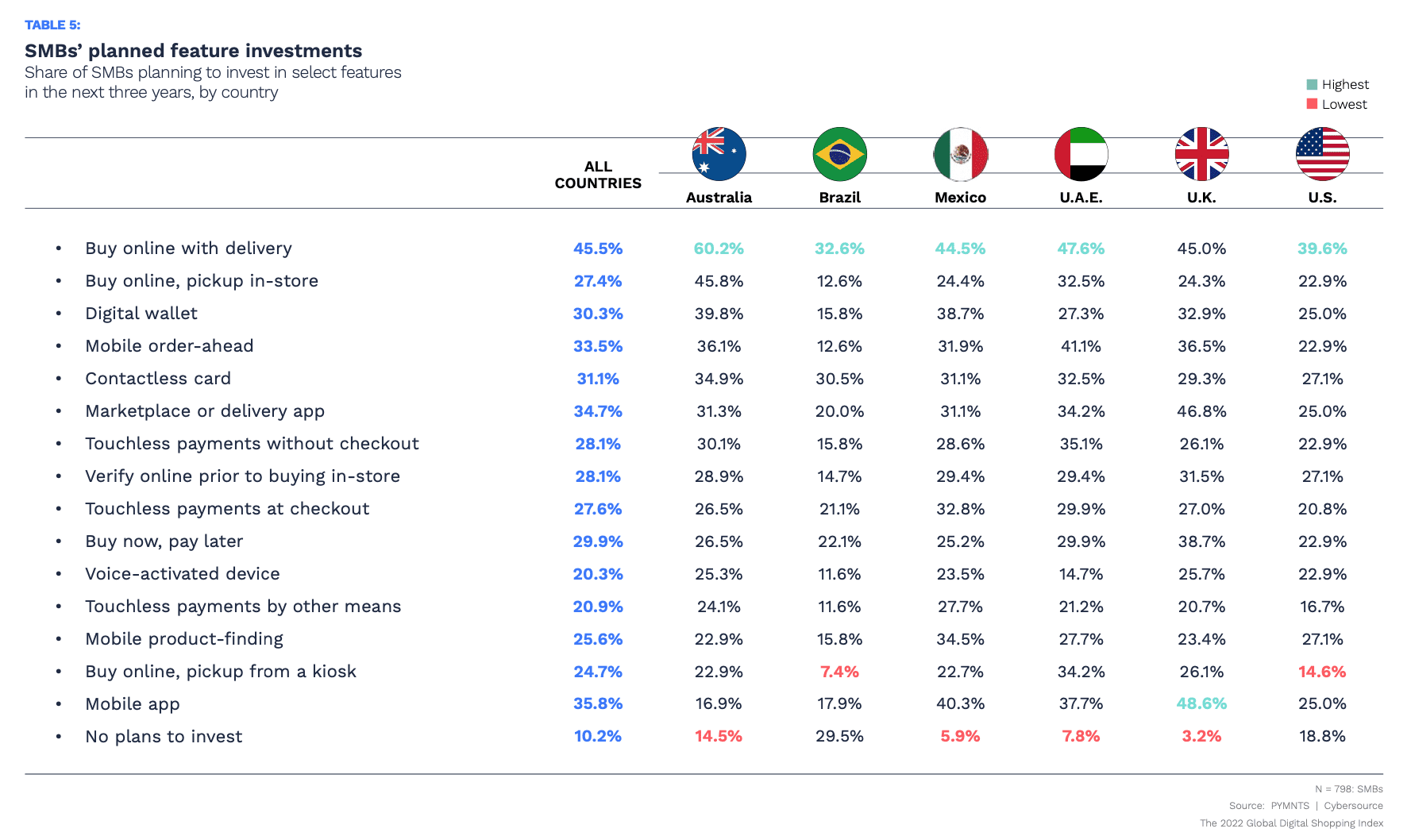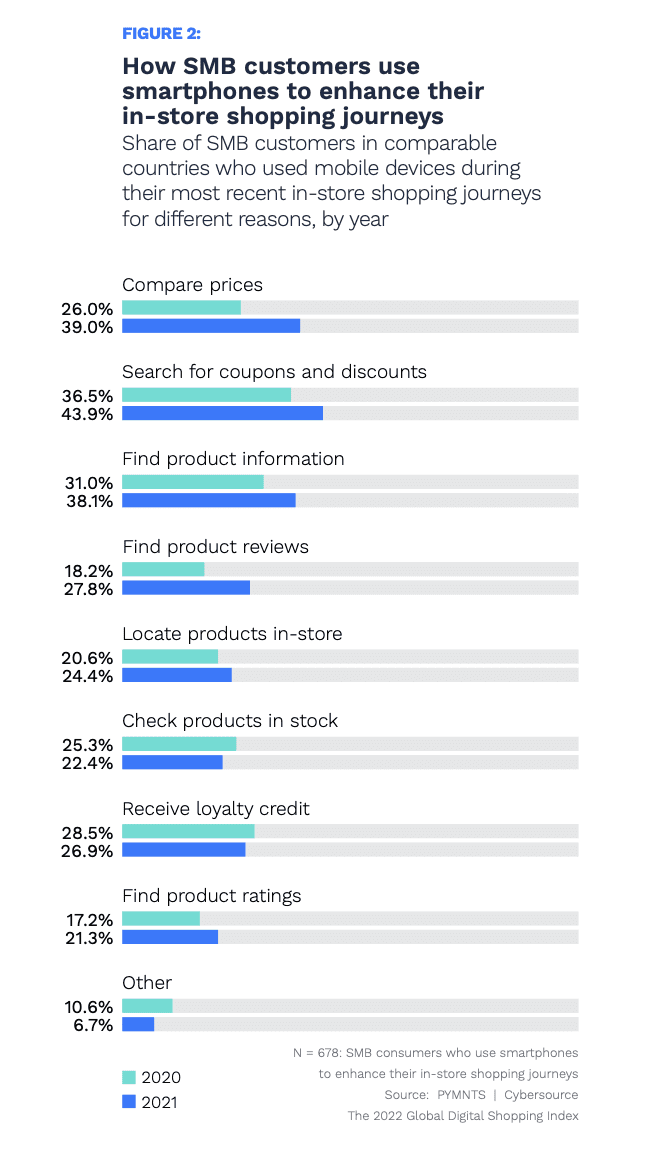The Data Point: SMBs Worldwide Cut Shopping Friction by 54% Year Over Year in 2021
Let your mind wander back to 2020. Things looked grim for millions of small and medium-sized businesses (SMBs) worldwide as the pandemic left them disconnected from consumers.
These smart entrepreneurs made a quick pivot to digital tools and platforms, pulling ahead of much larger competitors in some ways, reshaping businesses around digital and aligning those experiences with emerging consumer expectations. It was a global movement that saved SMBs.
For The 2022 Global Digital Shopping Index: SMB Edition, a PYMNTS and Cybersource collaboration, we surveyed over 13,100 consumers and 3,100 merchants in six markets — Australia, Brazil, Mexico, the United Arab Emirates, the U.K. and the U.S. — finding creativity and resourcefulness of SMBs in action as they leapt into energetically into digital, and made it.
Here’s a sampling of the valuable, applicable data contained in this landmark study.
Get Your Copy: The 2022 Global Digital Shopping Index: SMB Edition

- 67% of consumers like shopping with SMBs offering their preferred payment method
Reflecting differing payment patterns between countries studied, we found that payments preference is as big a draw among SMBs as it is on the largest online marketplaces.
“The problem is that not all SMBs provide the payment options that their customers want to use most. Our research shows that although 51% of SMBs in the six countries we studied in 2021 accepted their customers’ preferred payment methods, 67% of SMB customers said the SMBs they shopped at most recently took their preferred payment methods,” per the study.

- The average SMB reduced its overall shopping friction by 54% year over year in 2021
Without the internal teams and deep pockets to build solutions, SMBs in the six nations studied turned to digital platforms in droves — a smart pivot that created more resilient businesses.
On average, we found that SMBs had adopted 13 new shopping features between 2020 and 2021, “while their larger competitors — which are less reliant on sales generated through digital platforms — added an average of eight.” This helped the average SMB reduce overall shopping friction by 54% year over year in 2021, while larger businesses averaged a 5% cut.

- 18% of SMB customers shopped and paid for most recent purchases via smartphone
As remote controls for connected economy engagement, the role of smartphones in shopping journeys is now one of end-to-end convenience and satisfaction, and more consumers get it.
The study states that “In total, 18% of the SMB customers in our study shopped and paid for their most recent purchases entirely via smartphone. This means as many as 62 million SMB customers in the six countries we studied used their smartphones the last time they shopped with local SMBs.”
Get Your Copy: The 2022 Global Digital Shopping Index: SMB Edition
